
OLIVER, British Columbia — If you’re science-minded, iconoclastic and love good wine, then Gehringer Brothers Estate Winery in British Columbia’s Okanagan Valley should be a destination.
On the one hand, Gehringer Brothers has won so many awards and medals that there’s no longer room to display new ones on the walls of its tasting room on the Golden Mile Bench. This family owned and operated winery wears the crown as “King of the Platinum” as a result of Wine Press Northwest magazine’s annual Platinum Judging that determines the best of the best of wines from the Pacific Northwest. Gehringer has won more than 60 Platinum awards at the highly competitive judging, more by far than any other Pacific Northwest winery.
And yet, the only barrels at the winery sit outside as mere decoration the entryway. Modern winemaking techniques, such as micro-oxygenation, are used at every step of the wines’ development, but wherever you fall on the spectrum of tradition vs. technology, what’s indisputable is that Gehringer Brothers wines are astonishingly delicious and sell for a song.
New World meets Old World
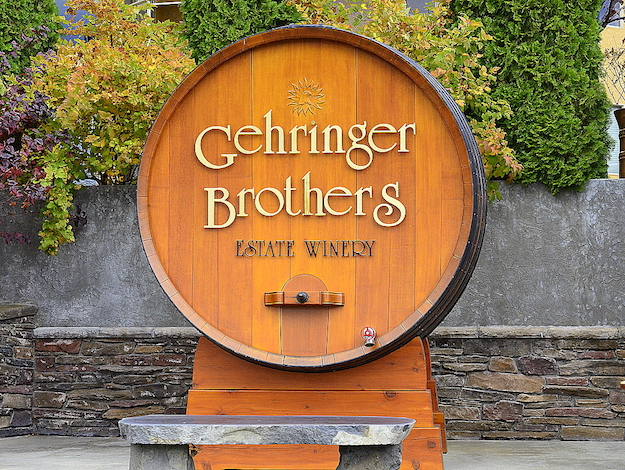
Brothers Walter and Gordon Gehringer are a blend of Old and New World, of German ancestry but born in British Columbia. After high school, in 1973 Walter embarked on a six-year education in Germany to follow his dream of studying at Geisenheim University in the Rheingau region.
He spent two years there working to prepare for entrance to the Enology and Viticulture program, then three years at the university, followed by a year filled with a succession of five-week practical experiences at different wineries. His brother Gordon spent four years in Germany and graduated with a degree from the State College and Research Institute for Viticulture and Horticulture in Weinsberg.
Today, the pair run the 25,000-case winery on a steep hillside in Oliver, British Columbia, making 20 different wines every year. They are in the first and only sub-appellation in the Okanagan Valley, established last year, called the Golden Mile Bench, at an elevation of 1,670 feet.
Rocky beginnings

Gehringer started in 1981 when the brothers bought the land where their vineyards and winery now stand, and began an arduous effort to plant grape vines. Arduous, even Herculean, because at some time in geologic history, a huge deposit of glacial sandy loam slid off the slopes above his property, carrying with it vast amounts of rock rubble. It all came crashing down on what are now his vineyards.
Initially optimistic, in order to begin planting they brought in a tractor to dig the rocks out of the soil. Soon, however, they realized that there was literally a vein of rock running through the land. It turned out that they were forced to remove a three foot deep layer of pure rock, dropping the elevation of the whole soil profile about three feet.
“It took us an entire year to clear about an acre, maybe an acre and a half, well enough to plant,” remembers Walter with a grimace. “And even with that we haven’t by any means removed all the rock, but we did manage to move the soil among the rocks so now we have a homogenous vineyard.”
Proceeding at the rate of an acre or so per year, the estate vineyards now cover 45 acres. Those acres are planted with thriving Riesling, Chardonnay, Pinot Gris, Ehrenfelser, Schönburger, Gewürztraminer, Sauvignon Blanc, Auxerrois, Pinot Noir, Cabernet Franc, Merlot and Cabernet Sauvignon.
Soil matters at Dry Rock Vineyard
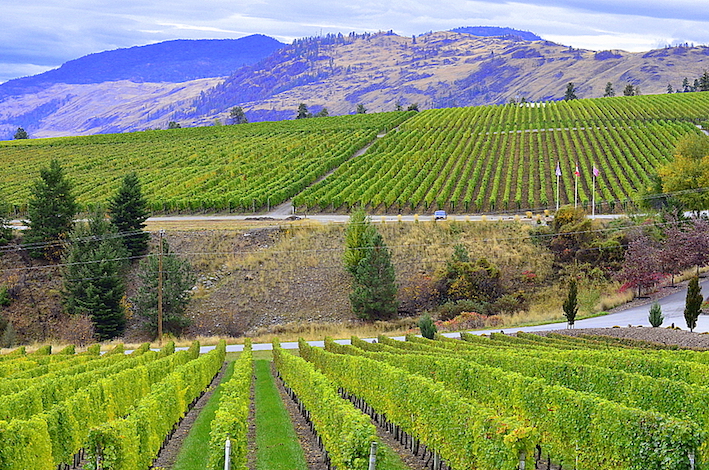
Digging out a three-foot layer of rocks one acre at a time wasn’t the end of their travails. They also have soil problems to contend with, and so they water all of their vines with overhead sprinklers, a technique not much used in this age of nearly ubiquitous drip irrigation.
“We’re such an arid region that we have basically no organic matter in our soil,” Walter explains. “The soil is totally dead, so what we’re trying to do is create an environment that’s positive for the root system.”
Overhead irrigation gives Gehringer the ability to grow grass between the rows, and their goal is to grow a grass that has a root system as deep as the vines’ roots, like a tall fescue. That way when the roots of the grasses decay each season they provide organic matter right down in the root zone, where it’s needed.
Olympic aspirations
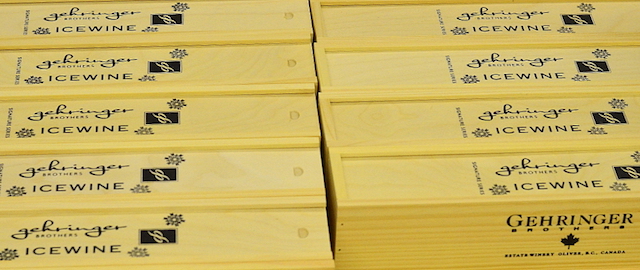
The analogy Walter uses is vivid. “You can keep prisoners on a bread-and-water diet and it will keep them alive, but an Olympic athlete needs a very different diet. So in a vineyard, the bread-and-water diet would be just water and nitrogen, and I will get a crop, I will get sugar and alcohol, and I will get a glass of wine. But I’m trying to raise an Olympic athlete in that glass of wine and that means that the root system of the vine has to have access to every building block, to build that flavor profile.
“It’s at least a 100-year process to get the soil in shape,” Walter continued. “And by building up the soil profile, we will get better wine. Because that’s the ultimate goal, not to rape and pillage your land but invest in it and improve upon it.”
And then there was extensive testing, years of trial plots and careful records, to determine which grapes were best suited to their vineyards. Walter Gehringer, meet Walter Clore.
A meeting of minds
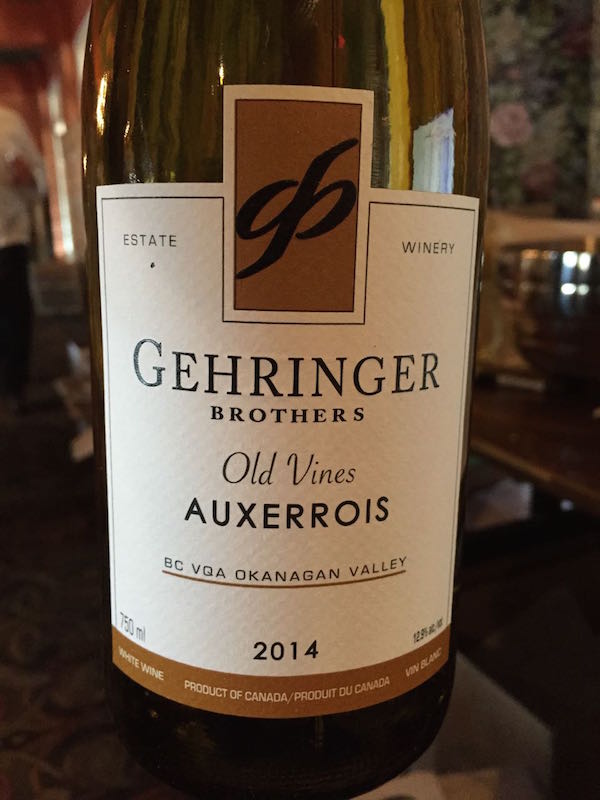
In the late 1970s, while Gehringer was still a student at Geisenheim, the Enological Society of the Pacific Northwest invited Dr. Helmut Becker of the Geisenheim Grape Breeding Institute to speak in Seattle. Gehringer wangled an invitation to drive Becker to Prosser to meet Dr. Walter Clore, widely considered to be the father of the Washington wine industry, whose viticultural research focused on the challenges of growing European wine grapes in the Pacific Northwest. They drove back to Seattle via the Okanagan Valley, a rather considerable detour, in order to get Becker’s advice about planting the Gehringer vineyards.
This meeting of great minds resulted in the creation of two test plots of 60 grape varieties, one near Oliver, and one farther north in Kelowna, where the climate is much colder. These experimental plots revealed that the grape best adapted to Gehringer’s needs was Auxerrois, a grape grown extensively in Alsace. Proving the worth of that research, today Gehringer’s Auxerrois is a model of a multi-layered wine with a refreshing snap and a subtle bouquet, quite unlike any other wine known in the region.
The German influence continues in Gehringer’s use of the Ehrenfelser and Schönburger grapes, both developed at the Geisenheim Institute for Grape Breeding. Schönburger is a cross between Pinot Noir, Chasselas, and Muscat Hamburg, while Ehrenfelser is a cross between Riesling and Silvaner. Both evoke from wine judges oohs and ahhs and cries of “what is this beautiful wine?”
And the Gehringer Brothers 2014 Old Vines Auxerrois won best of show at the 2015 Great Northwest Invitational Wine Competition, a judging of West Coast wine influentials.
Science rules
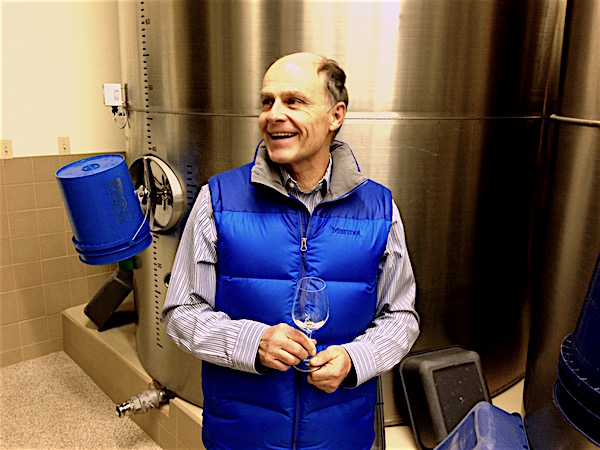
Science has paid off for the Gehringer brothers in their vineyard, and it rules their winery as well. Their wines are made in huge stainless steel tanks ranging from 5,000 to 15,000 liters. They run their own bottling line, a state-of-the-art line that seals all of their wines under screw tops.
They don’t use barrels, even for their red wines. They bottle all of their wines in March and April of every year, and they’re bottling the current vintages. And here’s where the debate comes in.
A winery without barrels or corks flies in the face of tradition and a wine lover’s romantic vision. To Walter Gehringer, it’s clear-cut: it’s all about breathing. The new generation of screw tops breathe exactly like a cork, they’re engineered for that. And as for barrels, he sees them as an anachronism.
“You can’t justify cutting forests down to make barrels that are only going to be used for three years,” he says. “We’ve used wooden barrels as wine containers since time immemorial, and we’ve learned to work around the barrel, to adapt our winemaking to what the barrel delivers. And that’s a constant rate of oxygenation, because the barrel is a constant membrane. The question is, is that the best rate of oxygenation to make the best wines?”
Making a case for micro-oxygenation
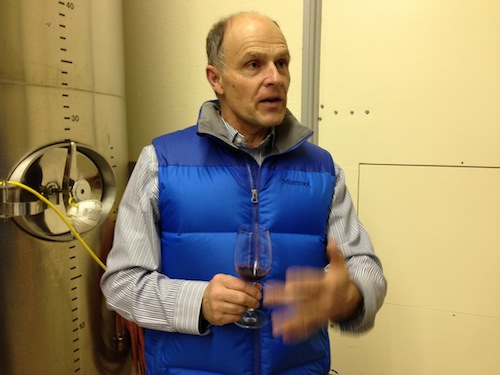
Answering his own question, he comes down squarely on the side of micro-oxygenation. Since the film Mondovino, micro-ox, as it’s known, has had a bad rap. It’s a technique that’s responsible for the “drink it now” style of wine that is slowly edging out winemaking aimed at wines that are intended to be aged. Some winemakers and collectors view it as mechanization that’s replacing the art of making serious wine.
“But now with today’s technology we’ve learned that you can use a much higher rate of oxygen than you would get with a barrel, so that even some of the most staunch traditionalists in the wine industry are actually supplementing their wine barrels with additional oxygen,” Gehringer explains. “Our tanks have an automatic oxygenation system, adding it in tiny amounts all the time, but at different rates at different stages of the wine’s development.”
“The French scientists who developed this system have shown that they can duplicate the barrel program exactly with micro-oxygenation and can shorten the time until the wine is ready to drink.”
To emphasize the effectiveness of his “drink it now” approach, he pours a 2014 Pinot Noir and one straight from the tank, only 30 days after it was pressed. The wine is not quite finished going through malolactic fermentation, and if made by more traditional means it would be spending a couple of years in a barrel before it would be ready to drink.
Stunningly, the two wines taste almost identical, the new wine tastes really well-developed, even in its infancy.
“I want to get that whole acid-tannin balance right from the get-go, so I don’t have to age the wine, and I’m still retaining that berry fruit flavor of the actual grape variety,” he said. “We’re not yet recognized as a red winery, but we are starting to turn some heads as people discover what we’re doing, making an approachable red, so that you don’t have to acquire a palate to enjoy it, like you do with so many red wines.”
Don’t worry, be happy
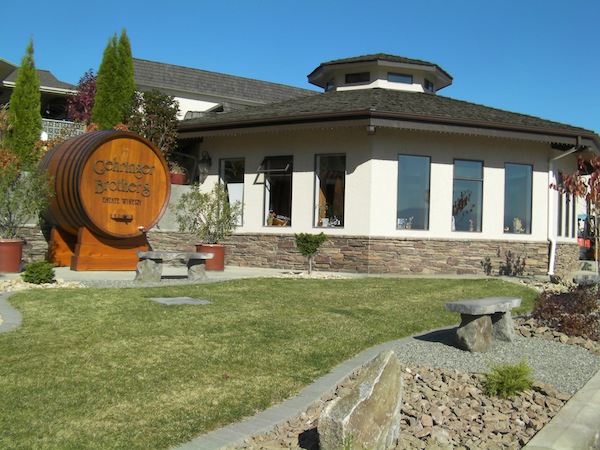
Is the Gehringer winemaking approach heresy or a brilliant use of science in the service of art?
“Throw out everything you’ve heard, don’t worry about anything,” Walter Gehringer suggests. “It’s just you, yourself, and what your mouth tells you. The price, whether it’s won an award, those have nothing to do with how you’re experiencing the wine. You just have to feel comfortable with what you enjoy.”
Judges all over the Pacific Northwest agree, these are some of the most enjoyable wines on the market today.
And that’s the paradox of Gehringer. Your experience with other wines and winemaking styles may well conflict with what your nose knows, what your palate whispers. The trick is to get out of the way and let the Gehringer wines speak for themselves. Let science steal your heart.

Leave a Reply